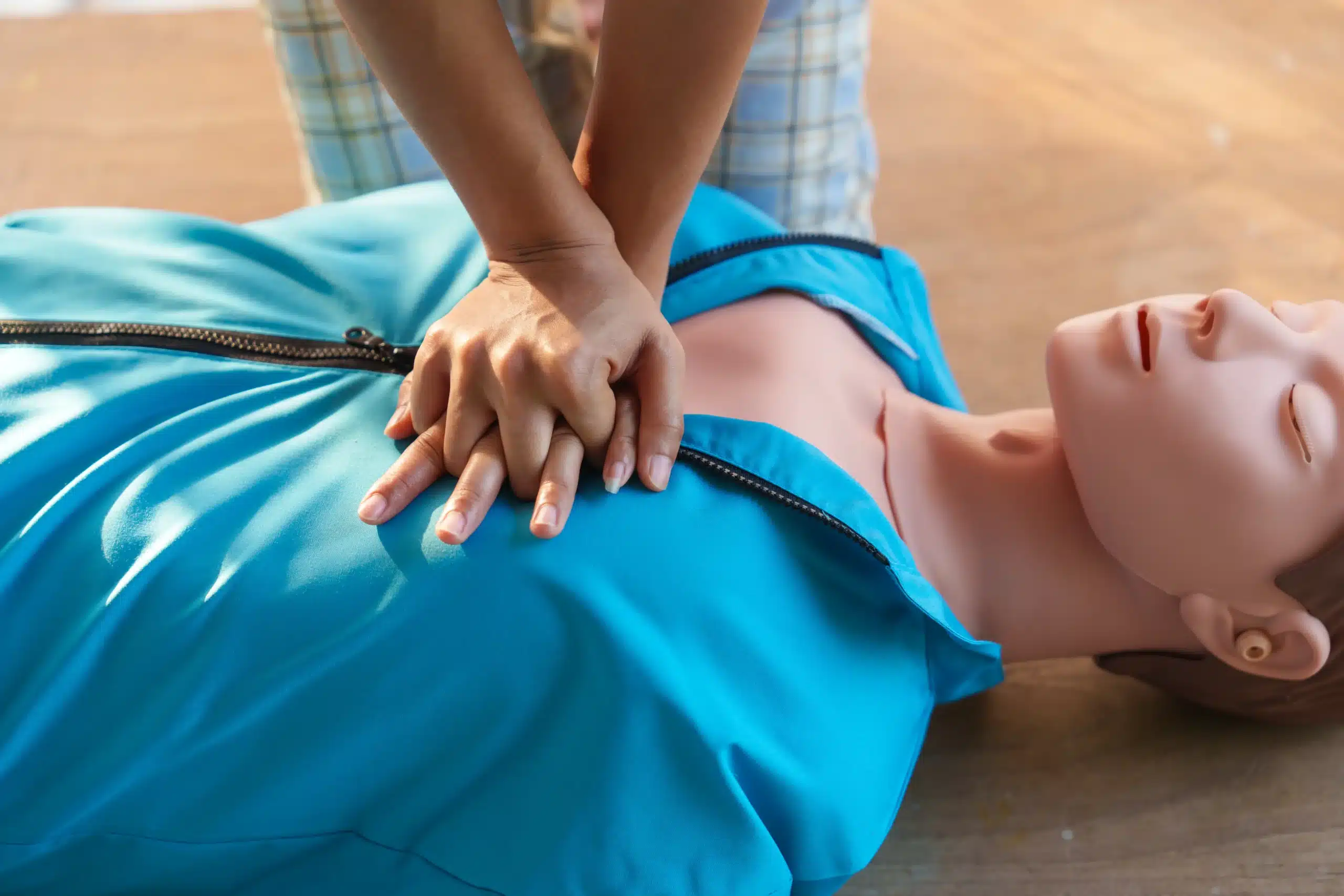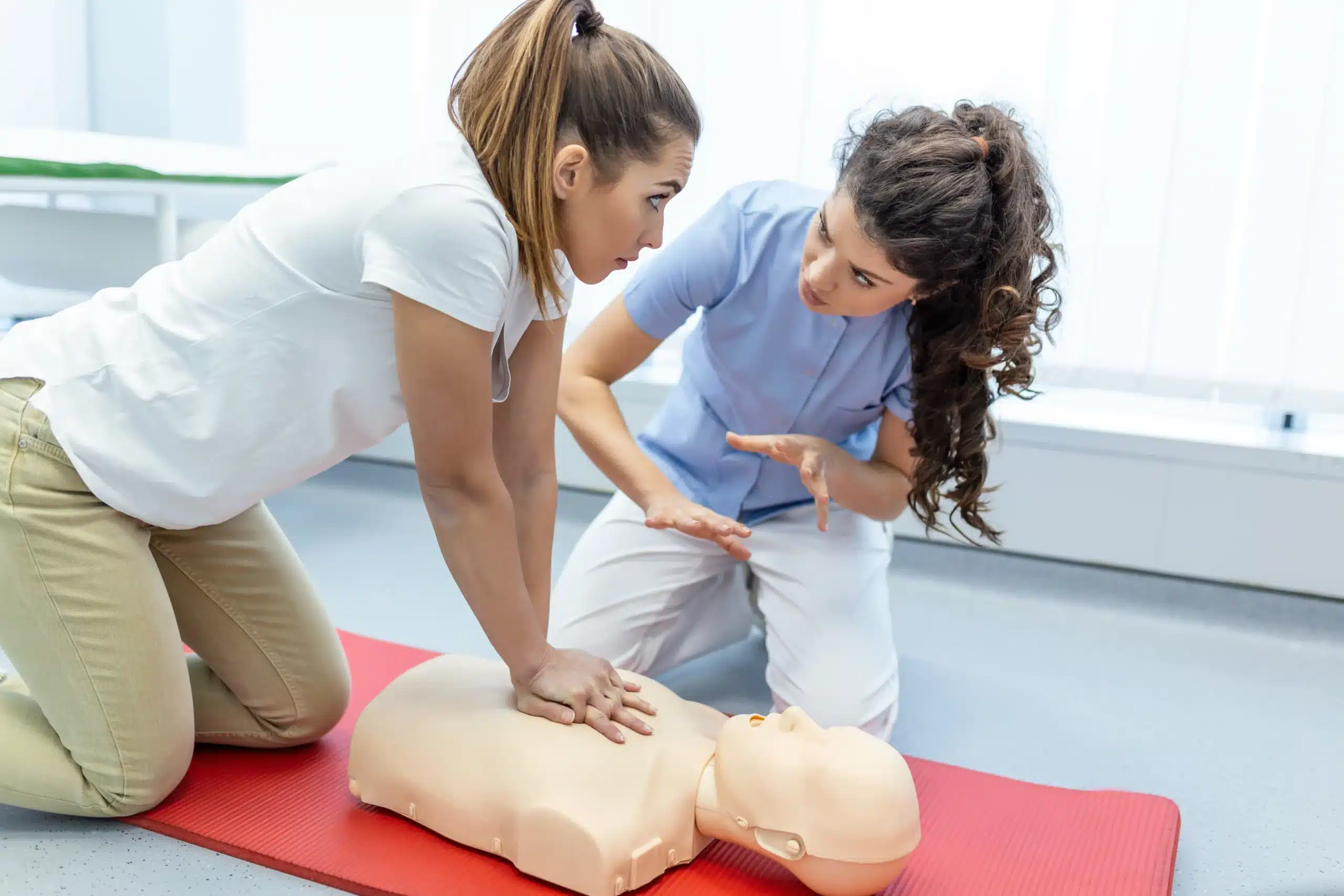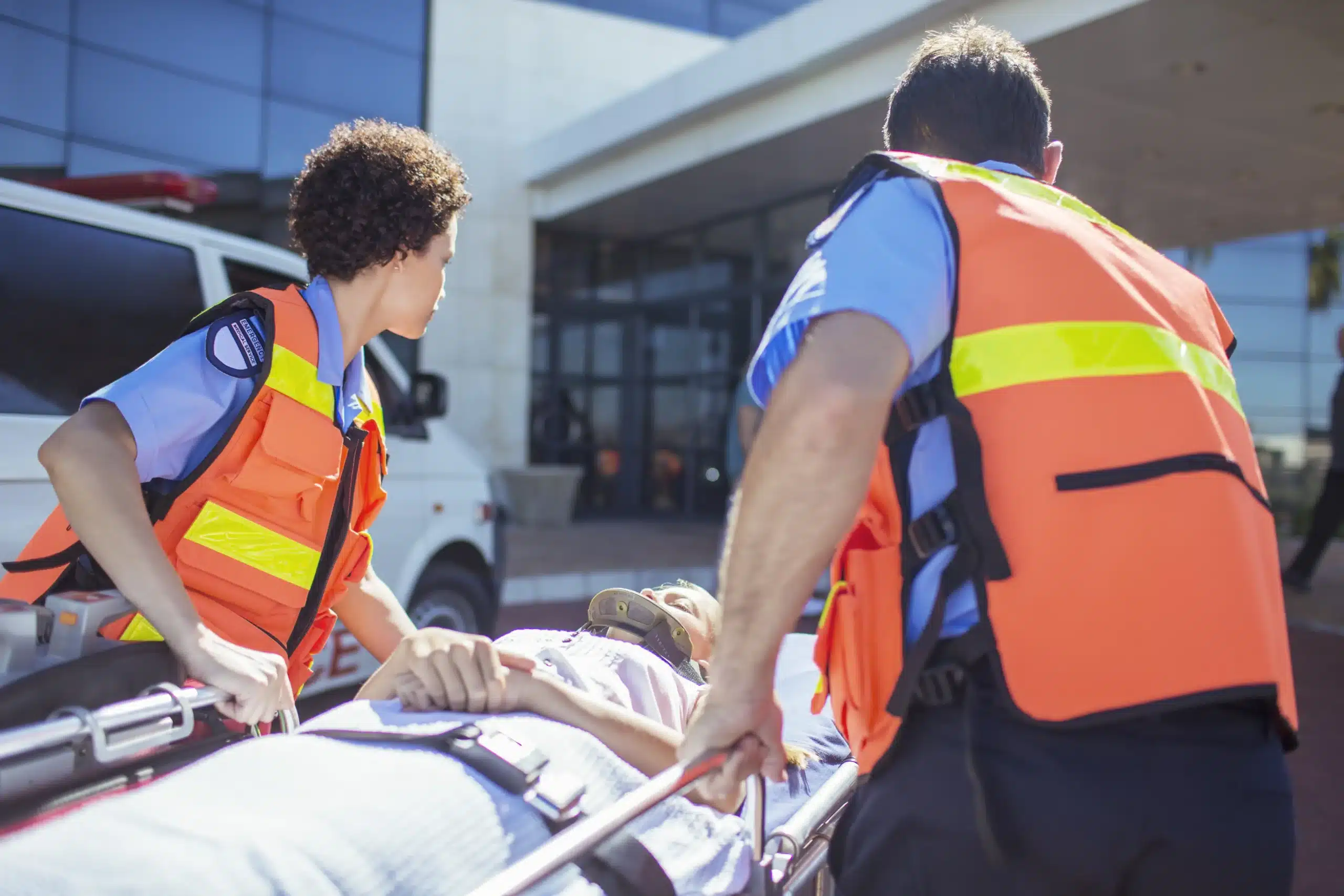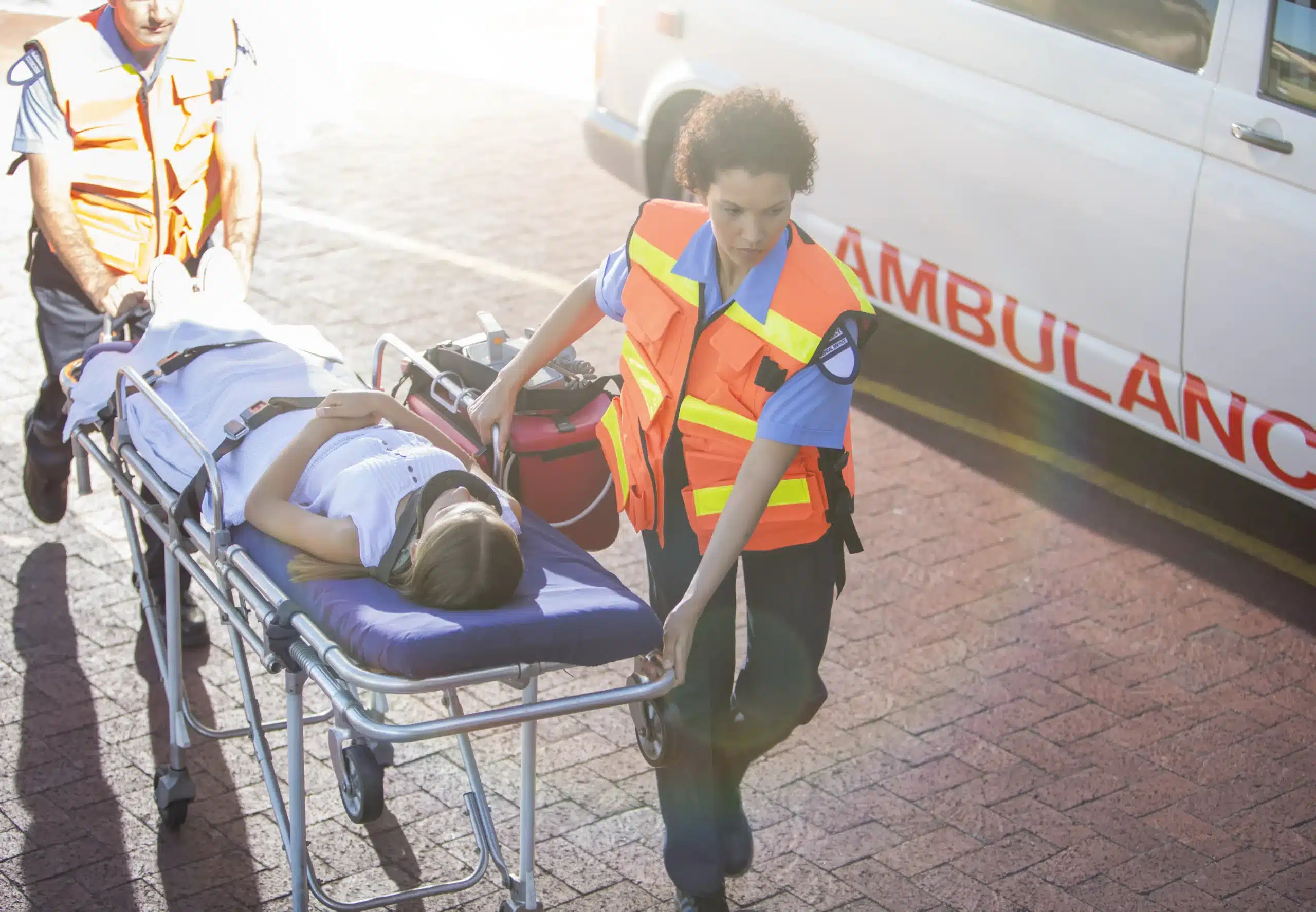CPR certification is a powerful skill that can make a profound difference in someone’s life. This guide provides a clear and actionable overview of CPR certification, from understanding its importance to finding the right course for you, including tips on searching for CPR certification near me. We’ll cover the different types of CPR courses, what to expect in a class, and how to choose a reputable training provider. We’ll also address common misconceptions about CPR and discuss the steps to maintain your certification. Empower yourself with the knowledge and skills to respond confidently in emergencies.
Key Takeaways
- CPR certification empowers you to make a difference: Learning CPR and first aid provides you with the skills and confidence to respond effectively in emergencies, offering immediate assistance until professional help arrives.
- Find the right CPR class for your needs: Explore options from accredited providers like the American Heart Association and American Red Cross, considering factors such as instructor experience, class size, and the availability of blended learning formats. Look for convenient locations and schedules that work for you.
- Stay up-to-date with your CPR skills: Maintain your certification by taking renewal courses before it expires, and consider ongoing education to stay informed about the latest advancements in emergency care. Regular practice and continued learning will boost your confidence and preparedness.
What is CPR Certification?
CPR certification equips you with the life-saving skills to respond effectively during emergencies. It’s a structured training program that teaches you how to recognize cardiac arrest, provide first aid, and administer CPR. The curriculum covers recognizing the signs of someone in distress and teaches practical skills to help. CPR/AED certification is a great option if you’re not in healthcare but want to be prepared for emergencies. Ultimately, the right CPR training gives you the confidence to act when it matters most. It’s about knowing what to do and having the skills to make a difference.
Why CPR Certification is Important
CPR certification is more than just a piece of paper—it’s a powerful tool that equips you with the skills and confidence to make a real difference in life-or-death situations. Whether you’re a medical professional, a concerned parent, or simply someone who wants to be prepared, understanding the importance of CPR certification can empower you to act quickly and effectively when it matters most.
Save Lives
CPR is a critical life-saving skill, but it’s often surrounded by myths and misconceptions. One common misconception is that chest compressions alone are enough to revive someone. While rescue breaths are an important part of traditional CPR, high-quality chest compressions are crucial for maintaining blood circulation and increasing the chances of survival. Don’t let fear of doing it wrong prevent you from potentially saving a life. Even if you’re hesitant about performing rescue breaths, learning effective chest compressions can still significantly impact a person’s outcome during cardiac arrest.
Build Confidence in Emergencies
Choosing the right CPR training isn’t just about getting a certificate—it’s about developing the confidence to step up in emergencies. Proper CPR training empowers you to provide immediate care until professional medical help arrives. Knowing you have the skills to respond effectively can make all the difference in those critical first few minutes. This confidence extends beyond the technical skills; it also helps you manage the emotional stress of an emergency and make clear-headed decisions under pressure.
Make a Difference
CPR and first-aid training provides you with comprehensive skills that are invaluable in various emergency situations. These situations can range from a heart attack at home to an accident on the playing field. Personalized training programs can cater to specific needs and learning styles, whether you’re a healthcare provider needing to maintain your certification or a parent wanting to learn basic life support for infants and children. By investing in CPR certification, you’re not just learning a skill—you’re becoming a vital link in the chain of survival, ready to make a difference when it matters most.
Types of CPR Certification Courses
Knowing which CPR certification is right for you can feel overwhelming. This section breaks down the most common types of CPR classes and who they are designed for. We’ll cover everything from the basics of BLS to the advanced techniques of ACLS and PALS.
Basic Life Support (BLS)
Basic Life Support (BLS) provides the foundational knowledge and skills for responding to life-threatening emergencies. This training covers core techniques like CPR for adults, children, and infants, along with how to use an automated external defibrillator (AED) and relieve choking. It’s essential training for healthcare providers, first responders, and anyone who wants to be prepared to help in a crisis. BLS certification is often a prerequisite for more advanced courses like ACLS and PALS. Safety Training Seminars offers BLS certification courses in Sacramento.
Advanced Cardiac Life Support (ACLS)
Advanced Cardiac Life Support (ACLS) builds upon the fundamentals of BLS. This advanced course is designed for healthcare professionals who manage or participate in the treatment of cardiopulmonary arrest and other cardiovascular emergencies. ACLS covers advanced interventions such as airway management, pharmacology, and team dynamics during resuscitation. It’s a critical certification for doctors, nurses, paramedics, and other medical personnel working in critical care settings. Check out our ACLS course if you’re a healthcare provider in Sacramento.
Pediatric Advanced Life Support (PALS)
Pediatric Advanced Life Support (PALS) focuses on the specialized skills needed to respond to emergencies in infants and children. This course teaches healthcare providers how to recognize and manage pediatric respiratory and cardiac arrest, along with other life-threatening conditions. PALS training emphasizes effective communication and teamwork in emergency situations, ensuring the best possible outcomes for young patients. It’s a vital certification for pediatricians, pediatric nurses, emergency medical technicians, and other healthcare professionals who care for children. We offer PALS certification at our Sacramento location.
Find CPR Certification Classes Near You
Finding the right CPR certification course depends on your location and specific needs. Here are a few places to explore:
Safety Training Seminars in Sacramento
If you’re in the Sacramento area, including Roseville and Rocklin, Safety Training Seminars offers a range of American Heart Association courses, including BLS, ACLS, PALS, and First Aid. They offer convenient schedules with classes available every day of the week, including weekends. Plus, they’re committed to affordable pricing with a low-price guarantee. Visit their website for more information on RQI classes and EMSA Child Care Health & Safety training.
American Red Cross
The American Red Cross is a well-known provider of CPR classes and certifications. They offer various courses designed to meet different needs, from basic CPR to more advanced certifications. You can easily find a class near you on their website.
American Heart Association
The American Heart Association also offers various CPR and first-aid training courses and often partners with local training centers, making it easy to find a class in your community. Check their website for certified training centers in your area.
Local Community Colleges
Many community colleges offer CPR and first-aid certification courses. These are often a convenient and cost-effective option, especially if you’re already enrolled in other courses at the college. Contact your local community college to see what they offer.
What to Expect in a CPR Class
So, you’ve decided to get CPR certified—fantastic! Knowing what to expect can help you feel prepared and confident going into your class. Here’s a quick rundown of what a typical CPR class entails:
Course Length
CPR courses vary in length depending on the certification level. A basic CPR/AED certification course, including training for professional rescuers, typically takes about eight hours. More advanced courses, like ACLS (Advanced Cardiac Life Support) or PALS (Pediatric Advanced Life Support), require more time.
Skills You’ll Learn
In a CPR class, you’ll learn the essential skills needed to respond to life-threatening emergencies. This includes recognizing the signs of cardiac arrest, performing chest compressions, giving rescue breaths, and using an AED (automated external defibrillator). Some courses also cover choking relief and basic first aid. Advanced courses cover more specialized techniques for healthcare professionals.
Hands-On Training
CPR is a physical skill, so expect plenty of hands-on practice. You’ll work with mannequins to simulate real-life scenarios and develop the muscle memory needed for performing compressions and rescue breaths effectively. This practical training is crucial for building confidence and competence.
Getting Certified
Once you’ve successfully completed the course and passed any required assessments, you’ll receive your official American Heart Association certification card, which is valid for two years. This card demonstrates your CPR proficiency and allows you to provide assistance in emergencies. Remember to keep your certification current by taking a renewal course before it expires.
How Much Does CPR Certification Cost?
CPR certification costs vary depending on several factors. Things like the type of course, where you take it, and the training materials included all play a role in the final price. Understanding these factors helps you find the best value for your training.
Typical Prices
Basic CPR and First Aid courses are typically less expensive than advanced certifications like ACLS or PALS. Basic courses cover the fundamentals, while advanced courses involve more comprehensive training and cover more complex procedures. Think of it like getting a regular driver’s license versus a commercial driver’s license—the specialized training naturally comes at a premium.
Discounts and Deals
Many training centers offer discounts. These might be for group registrations, students, or people renewing their certification. Look for promotions or seasonal deals, which can make your training more affordable. Some organizations, like employers or community groups, may cover the cost of certification for their members. It’s always worth checking for these opportunities. When choosing a program, consider factors like credibility and whether your employer will accept the certification.
Safety Training Seminars’ Low Price Guarantee
At Safety Training Seminars, we believe everyone should have access to life-saving skills. We offer the lowest prices for CPR certification in Sacramento County, guaranteed. Our low price guarantee ensures you’re getting the best possible value. We offer a variety of courses, from basic CPR and First Aid to advanced certifications like BLS, ACLS, PALS, and more. We also offer specialized training, including our EMSA Child Care Health & Safety course and RQI classes. Contact us to learn more about our affordable, high-quality training options.
Online vs. In-Person CPR Training
Choosing between online and in-person CPR training often comes down to personal preference and learning style. Both methods have their advantages, and understanding these can help you make the informed decision. Studies show that students learn CPR equally well regardless of the format. Ultimately, the most important factor is gaining the confidence to act in a real emergency.
Pros and Cons
Online CPR Training: The flexibility of online learning is a major plus. You can learn at your own pace, review materials as needed, and fit the training around your existing schedule. This makes online CPR courses a convenient option for busy professionals, parents, and anyone who prefers self-directed learning. However, online training typically lacks the face-to-face interaction and immediate feedback you get with an instructor. While some online programs require an in-person skills test, others may not, which could affect your comfort level performing CPR in real life. If you choose a fully online program, make sure it includes a practical skills assessment to ensure you’re truly prepared.
In-Person CPR Training: In-person classes provide hands-on practice and direct interaction with a certified instructor. This allows for immediate feedback and the opportunity to ask questions. The structured environment of a classroom setting can also be beneficial for some learners. The potential downside is that in-person classes require you to follow a fixed schedule and travel to a specific location, which can be tricky for busy schedules. However, for those who value hands-on learning and personal instruction, in-person training offers a valuable, immersive experience. Many in-person CPR courses, like those offered at Safety Training Seminars, incorporate online modules for a blended learning approach.
Blended Learning
Blended learning combines online learning with in-person skills practice. This approach lets you learn the theoretical aspects of CPR at your own pace online, then attend an in-person session to practice your skills and receive feedback from an instructor. Blended learning CPR courses are often acceptable even when in-person training is a requirement. This format offers a flexible and comprehensive learning experience. The online portion often includes lessons on recognizing cardiac arrest, administering first aid, and understanding the signs of someone experiencing a medical emergency. The in-person component focuses on hands-on skills practice and ensures you’re confident and competent in performing CPR.
Choose the Right CPR Provider
Finding the right CPR class is about more than just checking a box. It’s about gaining the confidence and skills to potentially save a life. Here’s what to look for when choosing a CPR training provider:
Accreditation and Reputation
First and foremost, confirm the training provider is accredited by a recognized organization. Look for certifications from the American Heart Association (AHA), the American Red Cross, or the National Safety Council (NSC). These organizations uphold rigorous standards, ensuring you receive high-quality training that meets national guidelines. A reputable provider will proudly display their accreditations. For example, Safety Training Seminars is a certified AHA Training Center offering courses like BLS and ACLS.
Instructor Expertise
Experienced, certified instructors make all the difference. They bring real-world knowledge and can answer your questions thoroughly. Don’t hesitate to ask about an instructor’s background and experience before signing up for a class. A great instructor can make a good CPR class exceptional. Look for providers who emphasize their instructors’ qualifications and experience.
Class Size and Resources
CPR is a hands-on skill. Small class sizes allow for more personalized attention from the instructor and ample opportunity to practice. Make sure the class includes plenty of hands-on training with mannequins and other equipment. This is crucial for building muscle memory and confidence in your abilities. Ask about the student-to-instructor ratio to ensure you’ll receive adequate individual attention.
Reviews and Testimonials
Check online reviews and testimonials to get a feel for past students’ experiences. Positive reviews often highlight the quality of training, the instructor’s expertise, and the course’s effectiveness. Reading reviews can give you valuable insights and help you make an informed decision. Look for comments about how well the course prepared students for real-life emergencies. Consider checking Google reviews, Yelp, or even the provider’s website for testimonials.
Maintain Your CPR Certification
CPR is a vital skill that can save lives, but it’s not something you learn once and forget about. Staying up-to-date is key to providing effective assistance during emergencies. This section covers everything you need to know about maintaining your CPR certification.
How Long is it Valid?
CPR certifications are typically valid for two years. This timeframe ensures that certified individuals stay current with the latest guidelines and techniques in CPR. Knowing these updates can significantly impact the effectiveness of CPR during a real emergency. After two years, you’ll need to renew your CPR certification to continue practicing. Check out our CPR courses in Sacramento to find a class that fits your schedule.
Renew Your Certification
Don’t let your skills lapse! Make sure you renew your certification before it expires. Many organizations, including Safety Training Seminars, offer streamlined refresher courses specifically designed for recertification. These courses cover the essential updates and techniques, making the renewal process efficient and straightforward. Our recertification courses make it easy to stay current.
Continuing Education
Even if your certification hasn’t expired, consider engaging in continuing education related to CPR and first aid. Regularly reviewing guidelines, practicing techniques, and staying informed about advancements in emergency care can boost your confidence and preparedness. This commitment to ongoing learning can make a real difference when you’re faced with a life-or-death situation. The American Heart Association offers various resources and educational materials to help you stay sharp. You can also explore our advanced certifications like ACLS and PALS to expand your skillset.
Common CPR Myths
It’s easy to get confused about CPR, especially with so much information (and misinformation) floating around. Let’s clear up a few common CPR myths so you can feel confident in your knowledge and ability to act in an emergency.
Who Can Do CPR?
One persistent myth is that only healthcare professionals can perform CPR. This simply isn’t true. Anyone can learn CPR, and in fact, it’s highly encouraged. Proper CPR training empowers everyday people to provide immediate, life-saving care until paramedics arrive. Think of it as a vital skill, like knowing how to change a tire or cook a basic meal—you hope you never need it, but it’s invaluable when you do. CPR certification courses are designed to be accessible and easy to understand, regardless of your background.
How Effective is CPR?
Another misconception is that CPR always brings someone back to life. While CPR is incredibly effective at increasing a person’s chances of survival, it’s not a guaranteed miracle cure. The goal of CPR is to maintain blood circulation and oxygen flow to the brain and vital organs, buying precious time until advanced medical help arrives. It’s also important to remember that chest compressions are crucial, even if there’s a risk of rib fractures. While the possibility of injury exists, not performing CPR on someone in cardiac arrest is far more dangerous.
Training Requirements
Finally, some people believe that CPR training is expensive and time-consuming. Again, this isn’t necessarily the case. Many organizations, like Safety Training Seminars, offer affordable CPR training options, making it accessible to almost anyone. The courses are designed to fit into busy schedules. The skills you learn are valid for two years, giving you ample time to practice. It’s also a myth that CPR can be performed on a conscious person. CPR is designed for individuals who are unresponsive and not breathing.
Related Articles
- Why CPR Is Important in Healthcare
- CPR Certification in Sacramento: Your Guide
- Heartsaver CPR: Your Guide to Getting Certified
- Online CPR Classes in Sacramento: Your Complete Guide
- CPR & First Aid in Sacramento: Your Guide
Frequently Asked Questions
What if I’m nervous about performing CPR in a real emergency? It’s completely normal to feel apprehensive about using CPR in a real-life situation. That’s why choosing the right training is so important. Look for a program that emphasizes hands-on practice and provides ample opportunity to ask questions. A good instructor will create a supportive learning environment where you can build confidence and address any concerns. Remember, even basic CPR skills can make a difference, and any action is better than no action.
How do I choose between CPR/AED and First Aid certification? CPR/AED certification focuses specifically on cardiopulmonary resuscitation and using an automated external defibrillator. First Aid certification covers a broader range of skills, such as treating minor injuries, burns, and allergic reactions. If you’re looking for comprehensive emergency preparedness, combining CPR/AED and First Aid training is a great option. Many training centers offer combined courses that cover both.
Is online CPR certification accepted everywhere? While online CPR certification offers flexibility, some organizations and employers may require in-person training or a blended learning approach. It’s always best to check specific requirements beforehand. For example, healthcare providers and certain professional rescuers often need in-person certification. If you’re unsure, contact the organization or employer directly to confirm their CPR certification policy.
What’s the difference between BLS, ACLS, and PALS? BLS (Basic Life Support) provides foundational CPR skills for anyone, including healthcare providers and the general public. ACLS (Advanced Cardiac Life Support) is designed for healthcare professionals who manage cardiac arrest and other cardiovascular emergencies. PALS (Pediatric Advanced Life Support) focuses on the specialized skills needed to respond to emergencies in infants and children. The right course for you depends on your specific needs and career path.
How can I find affordable CPR classes near me? CPR training costs vary, but there are ways to find affordable options. Check local community centers, hospitals, or organizations like the American Red Cross and American Heart Association, which often offer lower-cost courses. Also, look for discounts for groups, students, or those renewing their certification. Safety Training Seminars offers a low-price guarantee for CPR certification in Sacramento County.







